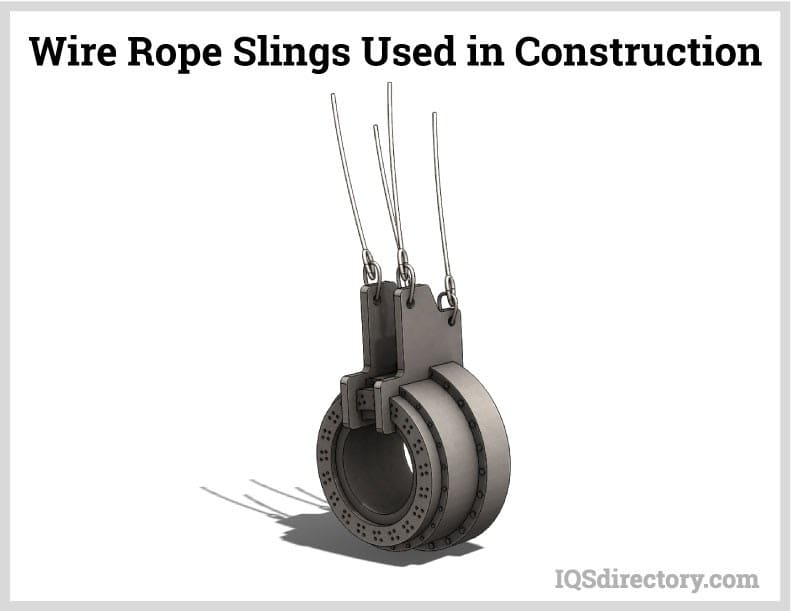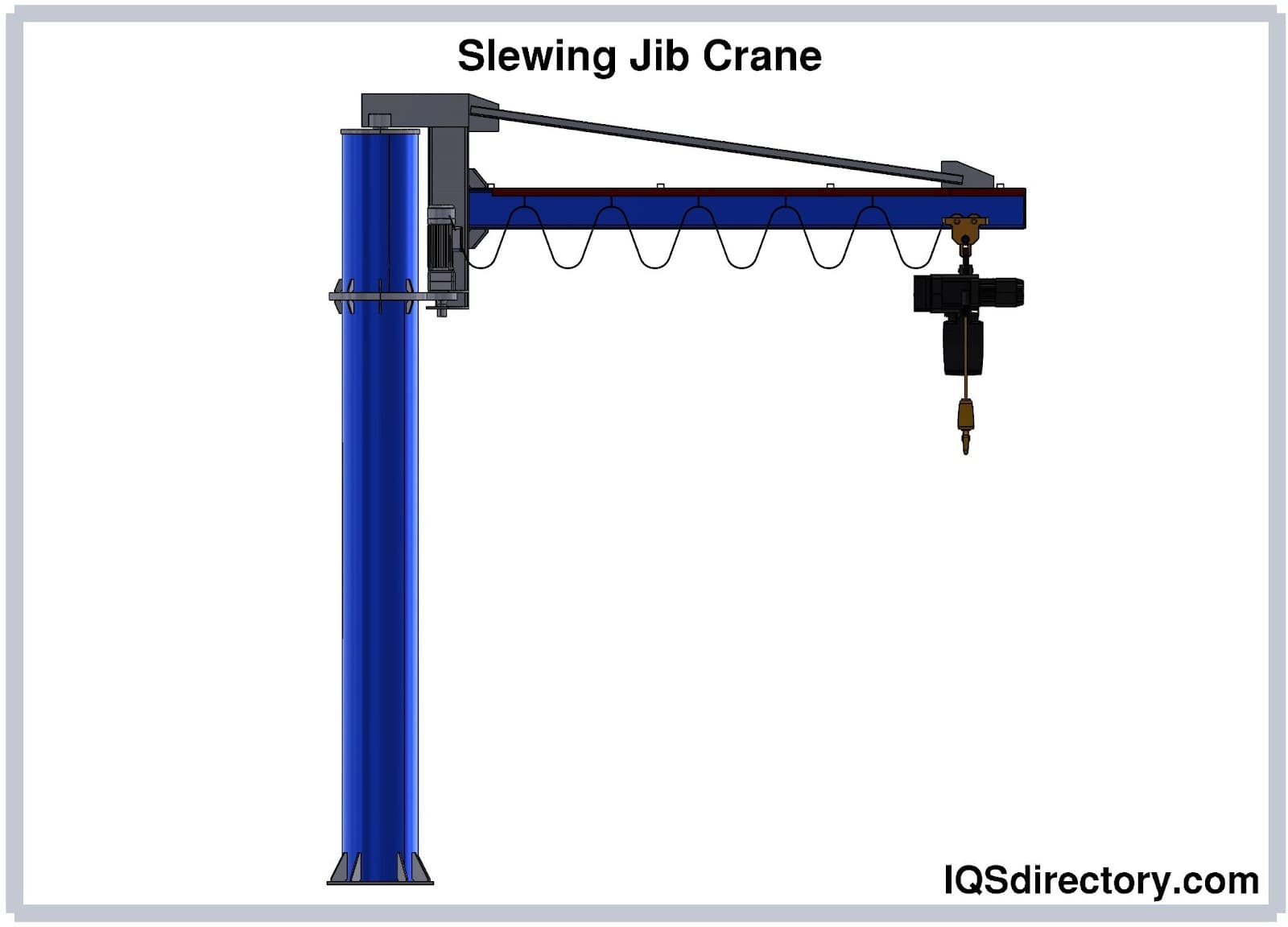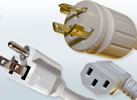Wire rope slings are purpose-built assemblies of wire ropes used for hoist lifting and crane rigging. These are typically constructed using steel wire ropes with end terminations. Many wire strands are twisted and braided together to create wire rope with a spiral pattern. Read More…
As leading innovative wire rope manufacturers, Bergen Cable Technology has been providing engineering assistance for well over half a century, helping customers develop cost effective, durable solutions.

JSC, as one of the most diversified wire rope manufacturers, utilizes over 200 production machines to produce top rated wire products in ferrous and nonferrous materials. Industries that JSC serves include electronics, geophysical and communications.

Lexco is an ISO:9001 manufacturer of wire rope, cable, and bungee cord assemblies; and push-pull controls. Our in-house capabilities range from swaging and extrusions to die-casting, proof-loading, and CNC machining. Lexco Cable is proud to serve a diverse set of markets including military, aerospace, OEM, MRO, marine, architectural, and more. Contact us today.

For over 30 years, companies across various markets have relied on Motion Control Technologies to provide high-quality mechanical cable solutions. Our line of products includes commercial cable lanyards, galvanized wire rope cable lanyards, swaged fittings, and more. We strive to build long-lasting relationships with our customers, regardless of your industry. Contact us today and tell us how we...

Aero Assemblies, Incorporated strives to make every effort, as dedicated wire rope manufacturers, to maximize product value throughout the manufacturing process.

More Wire Rope Sling Manufacturers

Since the various strings equalize the pressure and are more ductile than separate strings, they create a single wire with greater strength once they are formed into a solid. Wire ropes are bundled and coiled together to create cables, further boosting their strength and increasing their utility as a support method by enhancing their lifting capacity and structural stability. Coating the strands, which might be regular or limp, is a significant component in wire rope.
The strands are coiled from left to right, which is the opposite strand laying pattern when using regular lay, also known as right and normal lay. The strings are wound only one way in the Lang’s lay rope pattern. Wire rope's structure and design result in a finished product with exceptional strength, excellent strength, ductility, the capacity to withstand continuous bending strains, and weather resistance.
Parts of the Wire Rope Sling
The following three elements make up a conventional wire rope:
Wires
The tiniest component of a wire rope is a wire. The wires can be made from various metals, including bronze, iron, and stainless steel. Depending on the strength, abrasion resistance, and durability needed for the intended application, the grade of the material used to make the wire will vary.
Strands
One can make a strand by securely twisting two or more wires together in a specific way. Once more, the end-application of the rope will influence the weaving pattern.
Core
Steel, natural, and, occasionally, synthetic fibers are used to make it. The rope's core, surrounded by the strands, provides support when the rope bends or is fastened to a load.
Wire Rope Sling Common Strand Patterns
Strand patterns are crucial because they determine the rope's strength, toughness, and abrasion resistance. The strand typically consists of the number of wires in each layer, the total number of layers, and the diameter of each layer of wires. Here are some of the most popular strand patterns.
Single Layer
As the name implies, this design style comprises a single layer of uniformly sized or diameter wires surrounding the center. Typically, a core is covered by six strands, making a total of seven.
Filler Wires
It consists of two wire layers that are encircled by a core. Typically, six wires are in the inner layer, and twelve equal-diameter wires are in the outer layer. The spaces between the two layers of strands are filled with six filler wires with a lower diameter.
Seale
This pattern features two layers of wires surrounding the core, just like the filler pattern. In contrast to those in the outer layer, inner layer wires have a lower diameter. The smaller inner wires act as troughs in which the outside wires sit.
Warrington
Two wire layers make up this motif as well. However, wires of a consistent diameter are only present in the inner layer. Two sets of wires, one with a larger diameter and the other with a smaller one, are present in the ones on the outer layer. The larger wires in the outer layer rest in the inner layer's troughs, while the smaller ones rest on the inner layer's wires' crests.
Permaloc™ Wire Rope Slings
The Flemish splice method makes the eyes on Permaloc™ wire rope slings. In addition, Permaloc™ slings feature a reserve strength in case the sleeve is harmed during usage, in contrast to the simple return loop approach, which depends entirely on the sled sleeve for strength. Benefits of this rope pattern include:
- Promotes safety
- Reserves Strength – the integrity of eyes not solely dependent upon steel sleeves
- IWRC resists crushing better than FC.
- Saves money

Hidden Tuck (Hand-Spliced) Wire Rope Slings
Building an eye and tucking the wire rope's tail back into the sling's body results in hand-spliced wire rope slings, also referred to as hidden tuck sling. This method of splicing results in a stable eye. These can be extremely helpful when one is worried that a regular wire rope sling's pressed sleeve might get snagged or imprisoned during a lift. This design is especially noticeable when this hitch configuration is utilized with hand-split wire rope slings. In addition, hand-spliced wire rope accessories work great as chokers. Benefits of this rope pattern include:
- Encourages safety
- To prevent snags and injury, hidden tucks bury the ends of the wire.
- There are no steel sleeves to catch under loads which saves time.

Multi-Part Braided Slings
Multi-part braided slings, which are offered in 3 through 9 pieces, can help with a lift. Benefits of multi-part braided slings include:
- Their flexibility is a significant advantage compared to single-part wire rope slings of the same capacity.
- Tights are compressed and made to fit the load.
- The design generates friction to hold the load and prevent rotation.
Choosing the Proper Wire Rope Slings Manufacturer
To make sure you have the most positive outcome when purchasing Wire Rope Slings from a Wire Rope Slings Manufacturer, it is important to compare at least 4 Suppliers using our list of Wire Rope Slings companies. Each Wire Rope Slings Company has a business profile page that highlights their areas of experience and capabilities and a contact form to directly communicate with the manufacturer for more information or request a quote. Review each Wire Rope Slings business website using our patented website previewer to get an idea of what each business specializes in, and then use our simple RFQ form to contact multiple Wire Rope Slings companies with the same message.















 Cranes
Cranes Electric Hoists
Electric Hoists Forklifts
Forklifts Hydraulic Lifts
Hydraulic Lifts Rope
Rope Wire Rope
Wire Rope Castings & Forgings
Castings & Forgings Bulk Material Handling
Bulk Material Handling Electrical & Electronic Components
Electrical & Electronic Components Flow Instrumentation
Flow Instrumentation Hardware
Hardware Material Handling Equipment
Material Handling Equipment Metal Cutting Services
Metal Cutting Services Metal Forming Services
Metal Forming Services Metal Suppliers
Metal Suppliers Motion Control Products
Motion Control Products Plant & Facility Equipment
Plant & Facility Equipment Plant & Facility Supplies
Plant & Facility Supplies Plastic Molding Processes
Plastic Molding Processes Pumps & Valves
Pumps & Valves Recycling Equipment
Recycling Equipment Rubber Products & Services
Rubber Products & Services